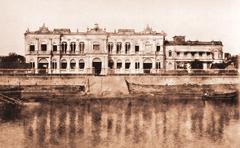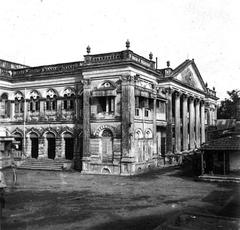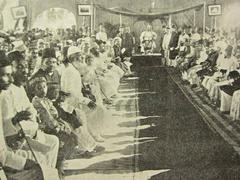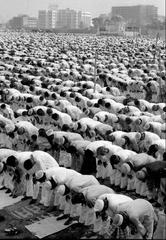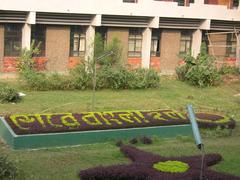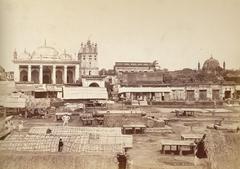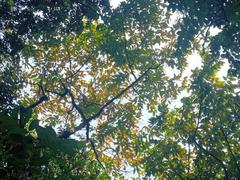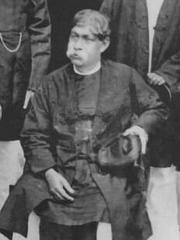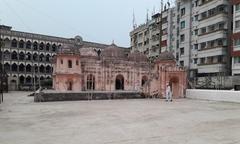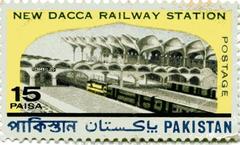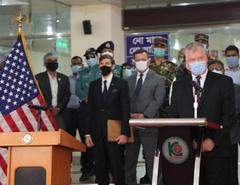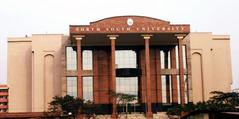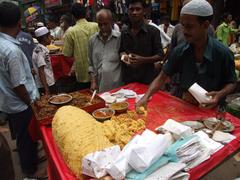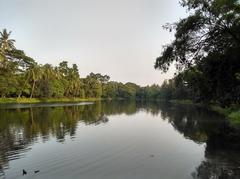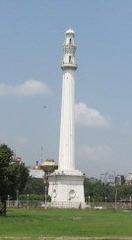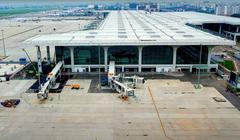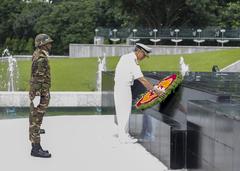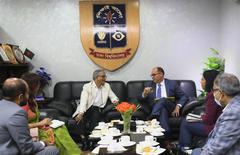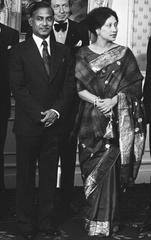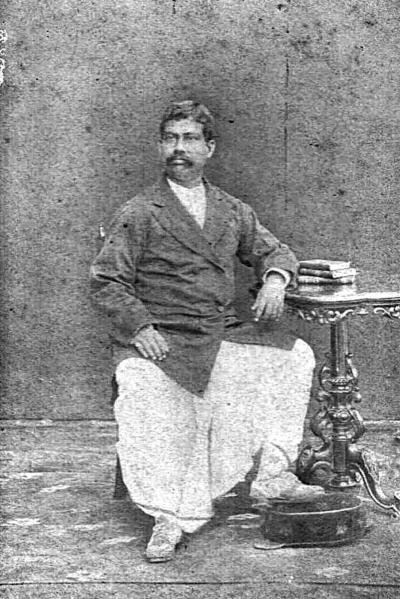
Visiting Ahsanullah Road: Complete Guide and Tips
Date: 24/07/2024
Introduction
Ahsan Manzil, also known as the Pink Palace, is an iconic symbol of Dhaka’s rich history and cultural heritage. Nestled on the banks of the Buriganga River, this architectural marvel stands as a testament to the opulence and grandeur of the Nawabs of Dhaka. The palace, built in the 19th century, showcases a blend of Mughal and British architectural styles, reflecting the city’s diverse historical influences. In addition to Ahsan Manzil, Ahsanullah Road is home to several other historical landmarks, including the Star Mosque, Armenian Church, and Lalbagh Fort, each contributing to Dhaka’s rich tapestry of cultural and architectural heritage (Travel Setu) (Our Dhaka). This comprehensive guide provides valuable insights into the historical significance, visiting hours, ticket prices, and travel tips for exploring these remarkable sites, ensuring an enriching and unforgettable experience for every visitor.
Table of Contents
- Introduction
- Early History and Establishment
- Mughal Era and Urban Development
- The Rise of the Nawabs of Dhaka
- British Colonial Period
- Post-Independence Era
- Ahsan Manzil - A Symbol of Dhaka’s Heritage
- Visitor Experience
- Top Historical Sites on Ahsanullah Road
- Visitor Tips
- FAQ
- Conclusion
- References
Early History and Establishment
The history of Ahsanullah Road in Dhaka is deeply intertwined with the broader historical narrative of the city itself. Dhaka, with its origins dating back to the 7th century CE, has been a significant urban center through various historical periods. Initially, it was part of the Hindu Gauda Kingdom, followed by the Buddhist and Shaivite Pala Empire, and later the Hindu Sena dynasty in the 10th century CE (Wikipedia).
Mughal Era and Urban Development
The Mughal era marked a significant transformation for Dhaka, which became the capital of Mughal Bengal in 1608. The city was declared the commercial and financial capital of Mughal India, benefiting from its strategic riverine location. This period saw the construction of many architectural marvels, including forts, mosques, and palaces, which laid the foundation for Dhaka’s urban landscape (Wikipedia).
The Rise of the Nawabs of Dhaka
The Nawabs of Dhaka played a crucial role in the city’s development during the 19th century. Ahsan Manzil, also known as the Pink Palace, was constructed under the direction of Nawab Abdul Ghani, the city’s wealthiest landowner at the time. The construction began in 1859 and was completed in 1872. The palace was named after Nawab Khwaja Ahsanullah, a prominent figure and philanthropist in the Nawab family (Travel Setu).
British Colonial Period
During the British colonial period, Dhaka continued to grow as a significant urban center. The British influence is evident in the architectural styles and urban planning of the time. Notable developments include the establishment of Eden College in 1880 and the University of Dhaka in 1921. The British also introduced horse-driven carriages as public transport in 1856, which significantly increased in number by the end of the 19th century (Wikipedia).
Post-Independence Era
After the independence of Bangladesh in 1971, Dhaka became the capital of the new state. The post-independence period saw rapid urbanization and development, transforming Dhaka into a modern megacity. Significant infrastructural developments during this period include the establishment of the Kamalapur railway station in 1969 and the relocation of Dhaka College to Dhanmondi in 1956 (Wikipedia).
Ahsan Manzil - A Symbol of Dhaka’s Heritage
Ahsan Manzil, located on the banks of the Buriganga River, stands as a testament to Dhaka’s rich cultural heritage and history. The palace has been restored to its former glory and is now open to the public as a museum. Visitors can explore the palace’s rich history, view its impressive architecture, and learn about its cultural significance (Our Dhaka).
Architectural Significance
Ahsan Manzil is an architectural marvel, showcasing a unique blend of Mughal and British architectural styles. The palace’s design includes elements such as grand staircases, ornate balconies, and intricate carvings, reflecting the opulence of the Nawabs of Dhaka. The palace complex also hosts cultural events and exhibitions that align with the country’s heritage preservation efforts (Travel Setu).
Conservation Efforts
Recognizing its historical and cultural significance, various conservation initiatives have been undertaken to preserve Ahsan Manzil’s legacy. These efforts ensure that the palace remains in pristine condition for future generations, retaining its position as a beacon of Dhaka’s cultural landscape (Our Dhaka).
Modern-Day Relevance
Today, Ahsan Manzil stands as a bustling hub of culture, education, and art. It is a living testament to Dhaka’s dynamic past and its promising future, bridging the gap between tradition and modernity. The palace attracts thousands of visitors each year, contributing to the growth of heritage tourism in Dhaka (Incredible Asia).
Visitor Experience
Accessibility and Transportation
Ahsan Manzil is located in Dhaka, the capital city of Bangladesh, making it easily accessible for both domestic and international tourists. Visitors can reach the palace by various modes of transportation, including rickshaws, CNGs, and boats. For those staying or sightseeing nearby, Ahsan Manzil is also accessible on foot. However, navigating Dhaka’s bustling streets can be challenging, so it is advisable to start early to avoid peak traffic hours (Our Dhaka).
Best Time to Visit
The best time to visit Dhaka is during the cooler, drier months from November to February. During this period, the weather is more pleasant, making it easier to explore the city without the discomfort of the intense heat or monsoon rains that characterize other times of the year. Temperatures during these months can range from about 15°C – 26°C (59°F – 79°F) (We Free Spirits).
Visiting Hours and Tickets
Ahsan Manzil is open to visitors from Tuesday to Saturday, with visiting hours from 10:30 AM to 5:30 PM. On Fridays, the palace opens from 3:00 PM to 7:30 PM. The palace is closed on Sundays and public holidays. Ticket prices are affordable, with a standard entry fee for Bangladeshi citizens and a slightly higher fee for international tourists. For the most up-to-date information on ticket prices and visiting hours, visitors are encouraged to check the official website or contact the museum directly (Travel Setu).
Top Historical Sites on Ahsanullah Road
Ahsan Manzil - The Pink Palace
One of the most iconic structures on Ahsanullah Road is Ahsan Manzil, also known as the Pink Palace. This magnificent building was the official residential palace and seat of the Nawab of Dhaka. Constructed in the 19th century, Ahsan Manzil showcases a blend of Indo-Saracenic Revival architecture, featuring elements of both Mughal and European styles. The palace is now a museum, offering visitors a glimpse into the opulent lifestyle of the Nawabs and the history of Dhaka. The museum houses a rich collection of artifacts, including furniture, paintings, and photographs from the Nawab era.
- Visiting Hours: 10 AM - 5 PM (Closed on Thursdays)
- Tickets: 100 BDT for locals, 300 BDT for foreigners
Star Mosque - A Mosaic Marvel
Another architectural gem on Ahsanullah Road is the Star Mosque, or Tara Masjid. This mosque is renowned for its stunning mosaic decorations made from broken pieces of Chinese porcelain. Originally built in the early 18th century, the mosque underwent significant renovations in the 20th century, which added the star motifs that give the mosque its name. The intricate tile work and the star-studded domes make the Star Mosque a visual delight and a significant example of Islamic architecture in Dhaka.
- Visiting Hours: Open during prayer times
- Tickets: Free entry
Armenian Church - A Testament to Religious Diversity
The Armenian Church, located near Ahsanullah Road, is a symbol of Dhaka’s religious and cultural diversity. Built in 1781 by the Armenian community, this church is one of the oldest Christian establishments in Dhaka. The church’s architecture is a blend of European and Mughal styles, featuring a simple yet elegant design with a white facade and a bell tower. The Armenian Church stands as a reminder of the once-thriving Armenian community in Dhaka and their contributions to the city’s cultural fabric.
- Visiting Hours: 9 AM - 5 PM
- Tickets: Free entry
Lalbagh Fort - A Mughal Masterpiece
Though not directly on Ahsanullah Road, the nearby Lalbagh Fort is an essential part of Dhaka’s architectural heritage. This incomplete Mughal fort, started in 1678 by Prince Muhammad Azam, is a fine example of Mughal architecture. The fort complex includes several structures, such as the Diwan-i-Aam, the tomb of Pari Bibi, and the Lalbagh Mosque. The intricate carvings, the use of red sandstone, and the beautiful gardens make Lalbagh Fort a must-visit for anyone interested in Mughal architecture.
- Visiting Hours: 10 AM - 5 PM (Closed on Sundays)
- Tickets: 20 BDT for locals, 200 BDT for foreigners
Modern Architectural Marvels
In addition to its historical landmarks, Ahsanullah Road is also home to several modern architectural marvels. The Jatiyo Sangsad Bhaban, or the National Parliament House, designed by the renowned architect Louis Kahn, is a striking example of modernist architecture. Located a short distance from Ahsanullah Road, this building is characterized by its geometric shapes, extensive use of concrete, and innovative use of natural light. The National Parliament House is considered one of the most significant buildings of the 20th century and a symbol of Bangladesh’s democratic aspirations.
- Visiting Hours: 9 AM - 5 PM
- Tickets: 500 BDT for guided tours
Visitor Tips
When visiting the architectural marvels of Ahsanullah Road, here are some tips to ensure a memorable experience:
- Timing: The best time to visit Dhaka is during the winter months (November to February) when the weather is pleasant and conducive for sightseeing.
- Dress Code: Respect local customs by dressing modestly, especially when visiting religious sites like mosques and churches.
- Guided Tours: Consider hiring a local guide to gain deeper insights into the history and significance of the landmarks.
- Safety: Dhaka is generally safe for tourists, but it’s advisable to avoid walking alone at night and to keep valuables secure.
- Transportation: Utilize Dhaka’s extensive public transportation system, including buses, trains, and ride-sharing services like Uber and Pathao, to navigate the city conveniently.
FAQ
Q: What are the visiting hours for Ahsan Manzil? A: Ahsan Manzil is open from Tuesday to Saturday, 10:30 AM to 5:30 PM, and on Fridays from 3:00 PM to 7:30 PM. It is closed on Sundays and public holidays.
Q: How much does it cost to visit Ahsan Manzil? A: The ticket prices vary for Bangladeshi citizens and international tourists. It is advisable to check the official website for the latest prices.
Q: What is the best time to visit Ahsan Manzil? A: The best time to visit is during the cooler months from November to February.
Q: Are guided tours available at Ahsan Manzil? A: Yes, guided tours are available and provide valuable insights into the palace’s history and architecture.
Q: How can I reach Ahsan Manzil? A: Ahsan Manzil is accessible by rickshaws, CNGs, boats, and on foot for those staying nearby. It is located in Dhaka, the capital city of Bangladesh.
Conclusion
Exploring Ahsanullah Road and its surrounding landmarks offers a unique opportunity to delve into the rich history and cultural diversity of Dhaka. Ahsan Manzil, with its stunning architecture and historical significance, remains a jewel in the crown of Dhaka’s tourist attractions. The nearby Star Mosque, Armenian Church, and Lalbagh Fort further enrich the historical narrative of the area, showcasing a blend of architectural styles and cultural influences. Whether you’re a history enthusiast, architecture aficionado, or curious traveler, Ahsanullah Road promises an enriching and unforgettable experience. For the best experience, consider visiting during the cooler months from November to February, and take advantage of guided tours to gain deeper insights into the historical and architectural significance of these landmarks (We Free Spirits) (Incredible Asia).
References
- Travel Setu. (n.d.). Ahsan Manzil Tourism. Retrieved from Travel Setu
- Our Dhaka. (n.d.). Attractions - Ahsan Manzil. Retrieved from Our Dhaka
- We Free Spirits. (n.d.). Dhaka Things to Do - Travel Guide. Retrieved from We Free Spirits
- Incredible Asia. (n.d.). Ahsan Manzil. Retrieved from Incredible Asia

